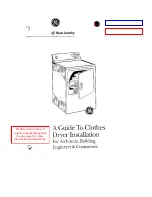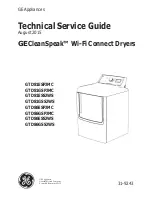
17
2. Single Dryer Venting
Where possible, it is suggested to provide a separate exhaust duct for each dryer. The exhaust duct
should be
laid out in such a way that the duct work travels as directly as possible to the outdoors with as
few turns as possible. It is suggested that the use of 90° turns in ducting be avoided; use 30° and/or 45°
angles instead. The shape of the exhaust duct work is not critical so long as the minimum cross section
area is provided.
IMPORTANT
: Minimum duct size is 18-inches for a round duct or 16" x 16" for a square duct. Duct
size
must not
be reduced anywhere downstream of the dryer.
IMPORTANT
: Exhaust back pressure measured by a manometer at each tumbler (basket) exhaust
duct area
should not exceed
0.3 inches of water column.
It is suggested that the duct work from each dryer not exceed twenty (20) feet with no more than two (2)
elbows (excluding dryer connections and outside exhaust outlets). If the duct work exceeds twenty (20) feet
or has numerous elbows, the cross-sectional area of duct work
must be
increased in proportion to the length
and number of elbows in it. In calculating duct size, the cross-sectional area of a square or rectangular duct
must be
increased by twenty percent (20%) for each additional twenty (20) feet. The diameter of a round
exhaust duct
should be
increased ten percent (10%) for each additional fifteen (15) feet. Each 90° elbow
is equivalent to an additional forty (40) feet, and each 45° elbow is equivalent to an additional twenty (20)
feet.
Summary of Contents for MD-170
Page 24: ...20...
















































